All Beef Hot Dog Smart Points
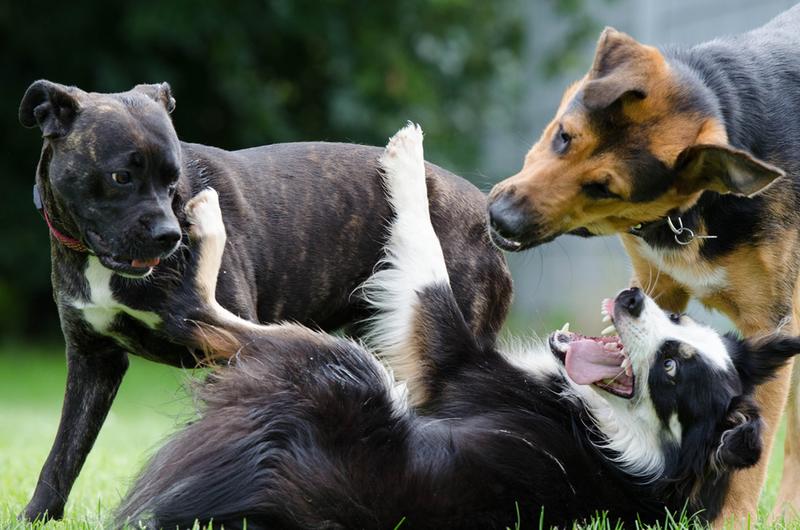
All dogs are smart, of form, especially yours—but some dog breeds are likely smarter than others. When psychologist Stanley Coren wrote "The Intelligence of Dogs" 25 years ago, he judged diverse breeds by their ability to learn and obey new commands. Natural instinct and a knack for dealing with unexpected situations are important too, only how apace a canis familiaris learns to practise what we want information technology to exercise remains the main factor in establishing a domestic dog's intelligence.
Based on Coren's original rankings, hither are 30 of the smartest dog breeds.
Border Collie
How did border collies go the world's smartest dogs? Genetics. These dogs have been selectively bred for intelligence for centuries. In fact, edge collies have such powerful brains that owners must be careful not to allow them get too bored, or else their mental free energy is likely to find destructive outlets. Fortunately, these dogs take to training very chop-chop.
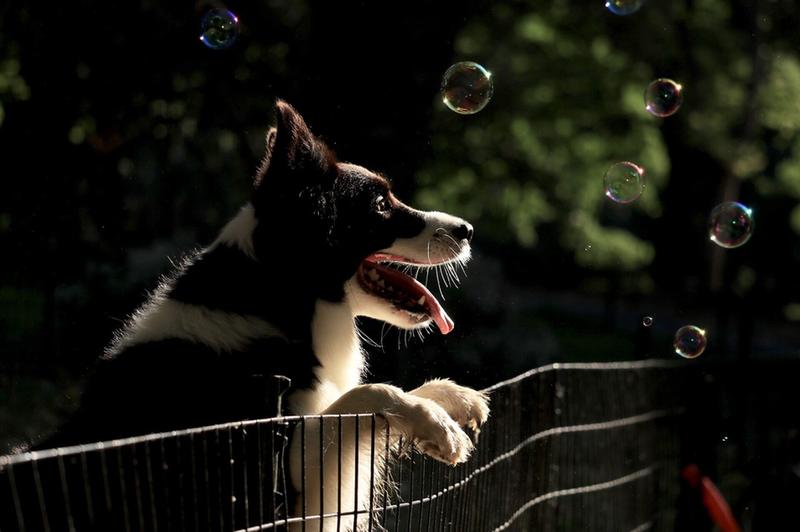
Nosotros know edge collies best for their piece of work on farms, like the dogs who mentor Babe the pig equally he learns to herd sheep in the moving picture Babe. Just these dogs tin can also learn other complex tasks, such as search and rescue. If you've got the time and energy to provide them with enough do and mental stimulation, border collies also make excellent companion dogs.
Poodle
Poodles are usually considered among the most adorable dog breeds, and they're as clever as they are good-looking. Their ability to respond well to preparation has made them highly successful in competitions (they accept taken "Best in Show" at Westminster twice) and equally performers—a troupe of poodles was once a popular circus feature.
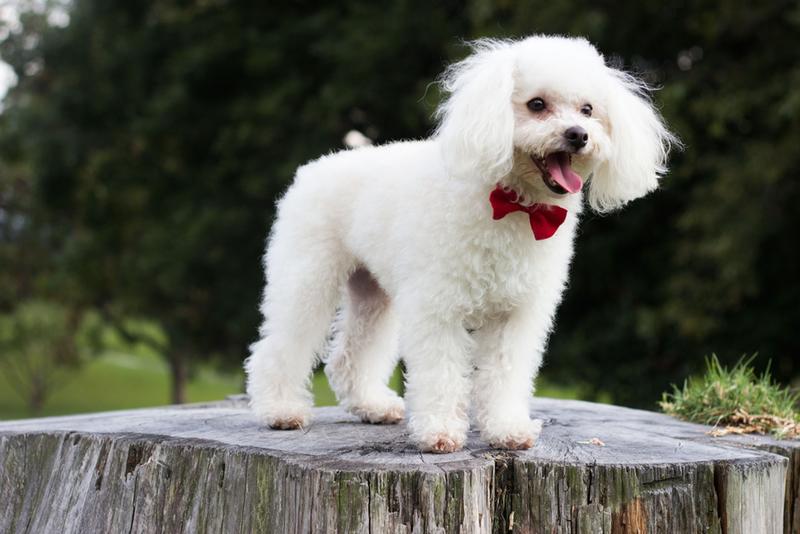
Nosotros often think of the poodle as a tiny lap dog—probably due to the pop culture image of the dog as a pampered companion to wealthy individuals. But standard-sized poodles can likewise make excellent hunting dogs; they're fine swimmers, in one case they've become accepted to water and tin be trained to retrieve fallen birds. Miniature poodles piece of work well in fields because they're able to get into nooks and crannies where their larger brethren can't fit.
German language Shepherd
The German shepherd is a smart, confident dog. It loves having a articulate job to practice and is a preferred candidate for constabulary and military work, as well as baby-sit duty for private families. (German shepherds were as well i of the beginning breeds selected for preparation as guide dogs for the visually impaired.)
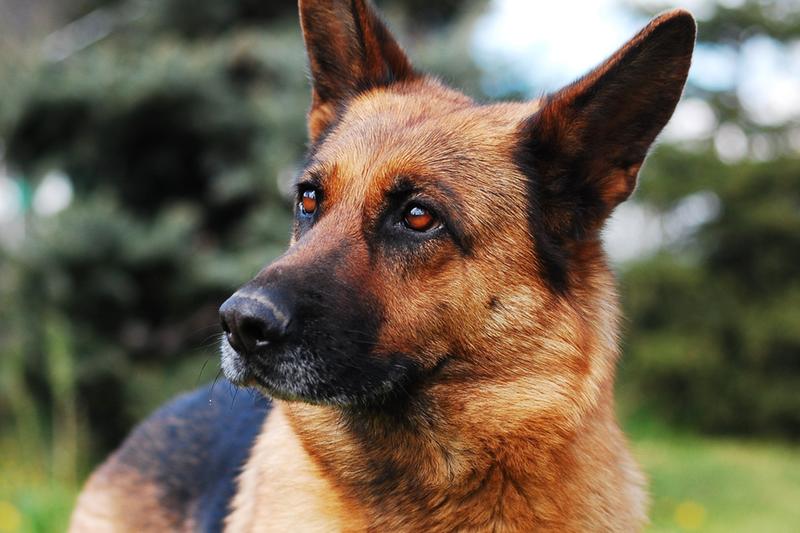
The German shepherd sometimes has a fearsome reputation, often reinforced past movies that draw the canis familiaris equally a snarling henchman to evil characters. (In fact, for decades, British canis familiaris owners, harboring a ii-war grudge against Germany, referred to the breed as "Alsatians.") Although the breed doesn't warm hands to strangers, information technology tin can develop a strong amore for its man companions over time.
Gilt Retriever
Golden retrievers honey to please humans and volition eagerly learn new tricks. They're great performers—think Air Bud—and oftentimes do well in agility competitions. Only they're also hardworking dogs, whether they're providing assist to the visually impaired, detecting explosives with their keen sense of smell or helping find disaster victims in search-and-rescue operations.

But one of the golden retriever's best jobs is right there in its name. The aureate retriever was first bred in 19th-century Scotland for the limited purpose of finding birds downed by hunters' rifles and bringing them to their masters without damaging the bodies. Gilded retrievers are notwithstanding highly popular among hunters today, but their friendly nature makes them excellent family dogs, too.
Doberman Pinscher
Like German shepherds, Doberman pinschers often have a reputation for existence overly ambitious, thanks to their size and frequent use as police or military dogs. The stereotype is understandable; after all, they were originally bred specifically to defend their owners, with an accent on forcefulness besides equally smarts.
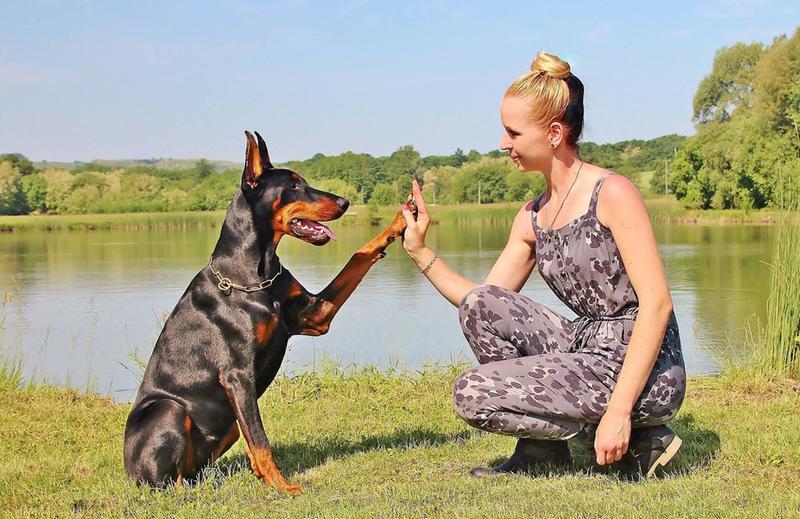
With the right preparation, though, the Doberman tin be an excellent companion that consistently responds well to learning new commands. In fact, studies show they are less aggressive than many other breeds, including some that aren't even known as particularly hostile.
Shetland Sheepdog
The Shetland sheepdog was bred as a herding canis familiaris capable of thriving in the rugged landscape and cold climate of the Shetland Islands, well north of Scotland. They still have a strong herding instinct to this mean solar day and are a dominant force in other athletic competitions.
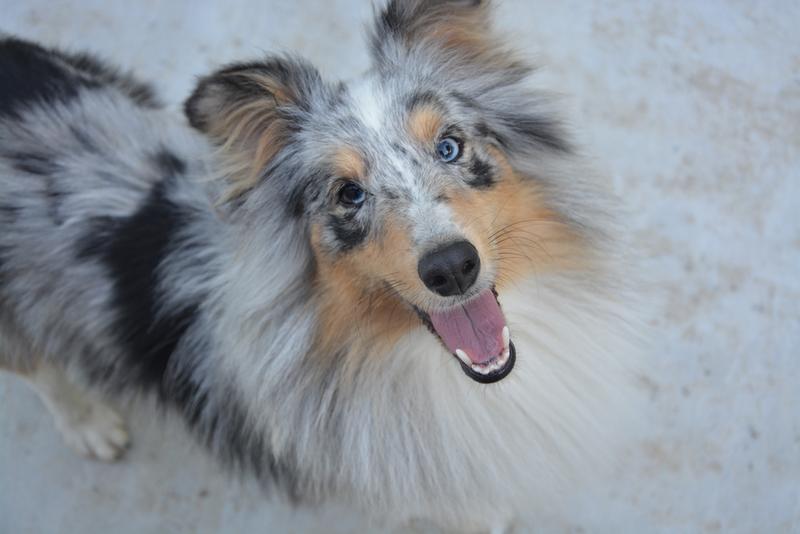
Shelties look like miniature collies and often resemble them in personality, too. They are quiet, just focused, and extremely loyal, which makes them neat dogs for children. They have ii coats of fur, a vestige of their subarctic origins and they shed frequently—only the good news is their fur sheds in clumps, making them easier to groom.
Labrador Retriever
The Labrador retriever's origins can exist traced back to Newfoundland and an early 19th-century breed known as the St. John's water domestic dog, which frequently helped fishermen bring in their nets. Although that breed died out in Canada, a few dogs had made it to England, where they were renamed later on the Labrador Peninsula and bred equally hunting dogs.
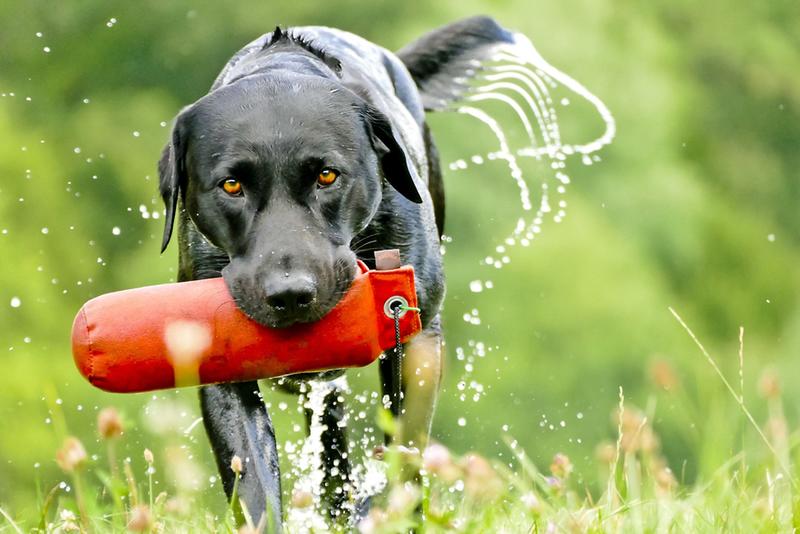
When labs fabricated it dorsum to Northward America, their skill every bit retrievers made them quite pop. They as well make good water rescue dogs and ofttimes serve equally canine assistants to the visually impaired or disabled. They are easy-going and intensely curious and go forth great with people, though they sometimes accept a tendency to wander off on their ain to runway interesting smells.
Papillon
Papillons, also known every bit continental toy spaniels, are small dogs who got their proper noun from the French discussion for "butterfly," considering of their large, hirsuite ears, which resemble a butterfly's wings. These dogs are often high-spirited, so they thrive well with people who tin give them plenty of play time.
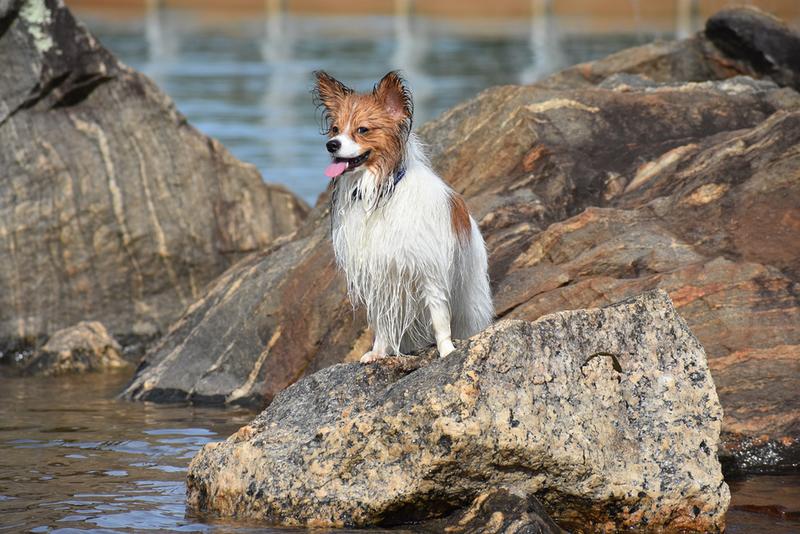
Luckily, they tend to pick up new commands readily, so there'south no shortage of possible activities for you to enjoy with them. Papillons are by and large a friendly breed and tin can be good family dogs. They even get along well with children—provided those children know how to behave themselves around dogs!
Rottweiler
Some people believe the Rottweiler can trace its pedigree all the style back to the Roman Empire, when the regal army used dogs to herd cattle in order to feed its troops in Germany. Closer to our time, the brood gets its name from the town of Rottweiler, where these dogs had almost died out until the German language military, facing a need for army dogs, encouraged a renewed breeding effort in the early 20th century.
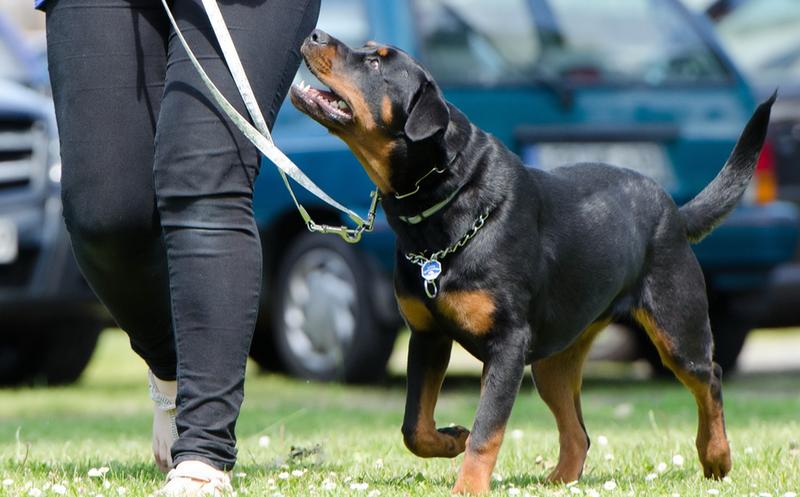
Mod Rottweilers can have backlog aggression and stiff territorial streaks, and then owners have to piece of work closely with them to make sure they're properly socialized. In one case they are, though, Rottweilers have instruction well and are usually very calm—unless they demand to protect their people!
Australian Cattle Canis familiaris
The Australian cattle canis familiaris came nigh when a cattle farmer crossbred drovers from England with tamed dingoes, creating an intelligent, high-energy breed that was platonic for herding livestock beyond miles of rough ground. They remain one of the world's all-time herding breeds to this day.
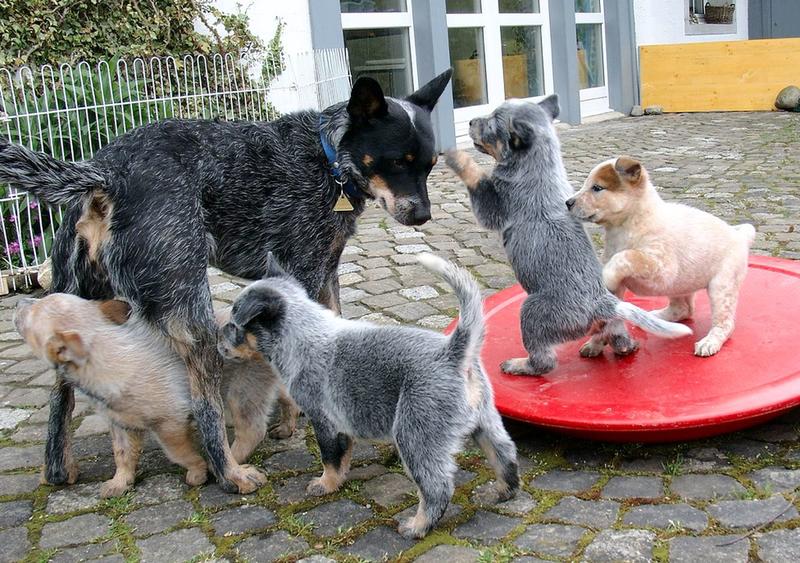
Similar many working dogs, the ACD needs to accept a sense of purpose. It can make a fine family dog, but if it doesn't have a "chore," its herding instincts can resurface, and information technology'due south been known to nip at children'due south heels when it thinks they're misbehaving. But these dogs take well to training and crave niggling in the way of grooming, so they do make for excellent pets in a one- or two-domestic dog household.
Pembroke Welsh Corgi
Corgis have enjoyed a chip of fame in recent years, through their role every bit the favored pet of Queen Elizabeth Two. She has had them by her side ever since she was a young girl, although she stopped having new puppies bred several years back and then that her dogs would not have to outlive her. (Her last corgi died in 2018; the ii dogs she has left are actually "dorgis," which are corgis crossbred with dachshunds.)
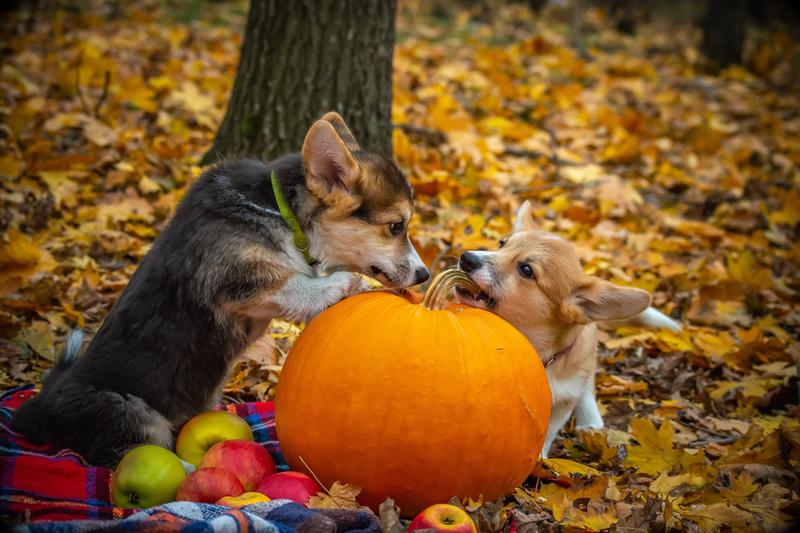
Americans also can't get plenty of this breed, and it's easy to come across why: The corgi has a steadfast, affectionate nature; they dearest to follow people and they hunger for attention, merely they nearly never bark unless something is seriously wrong.
Miniature Schnauzer
The miniature schnauzer is the near popular of all the schnauzer varieties. Despite their relatively diminutive size, they brand expert watchdogs, and when they aren't on duty they can exist extremely playful. They are cautious effectually strangers, simply readily have cues from their owners—your friends are likely to go your miniature Schnauzer'due south friends once you innovate them.
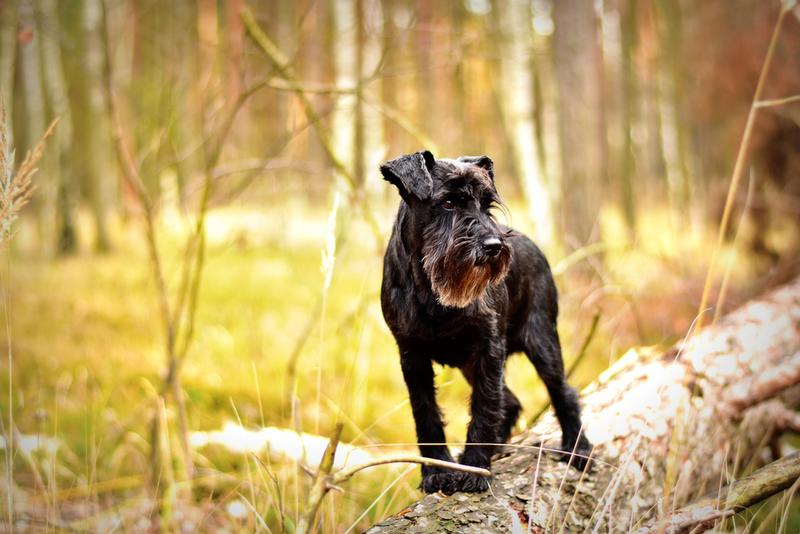
Officially, miniature schnauzers accept three fur colors: black, black and silver or common salt and pepper. In that location are miniature schnauzers with solid white coats, merely kennel clubs in North America believe these dogs aren't purebred schnauzers. If they were accepted every bit testify dogs, though, we bet white schnauzers would prove only equally successful at obedience competitions as their cousins!
English language Springer Spaniel
The English springer spaniel gets its proper noun from its original role equally a hunting canis familiaris, when information technology would run ahead of a shooting party and "spring" game birds resting on the ground into the air. They look similar to the slightly smaller English cocker spaniel; 200 years agone, the 2 types of spaniels were separated out from the aforementioned litters and bred to each develop distinctive traits.
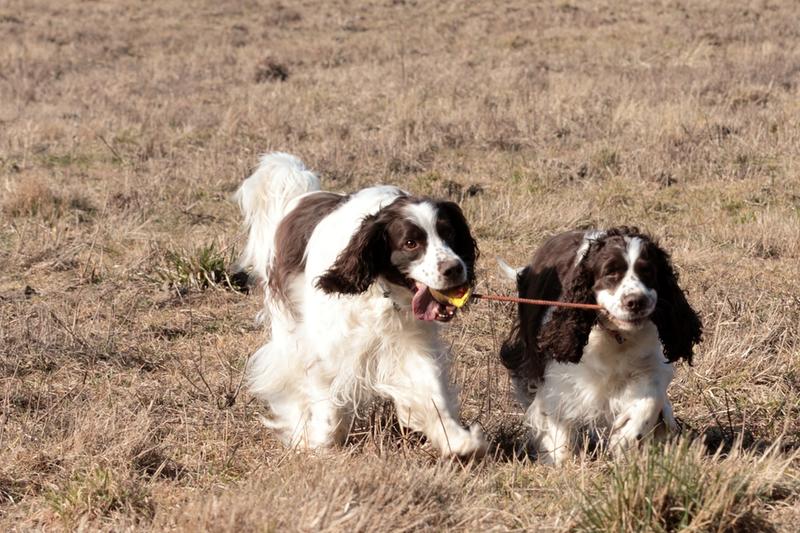
For the English springer, that ways, among other things, a friendly personality that makes it not merely a good family domestic dog, but also a canis familiaris that tin get forth with other pets, though English springers volition often choose a favorite family member with whom to spend most of their time. These dogs should be given tasks to focus on or else they'll become restless. When it comes fourth dimension to play, though, their long legs make them very speedy runners—and they also dear to swim!
Belgian Shepherd Dog (Tervuren)
There are several varieties of Belgian shepherd dogs, but the Tervuren, named subsequently a village in the region, is particularly notable for its intelligence and demanding nature. But this isn't a dog you lot should become if you've never raised a dog earlier; it requires a lot of attention to bring its high energy down to a manageable level.
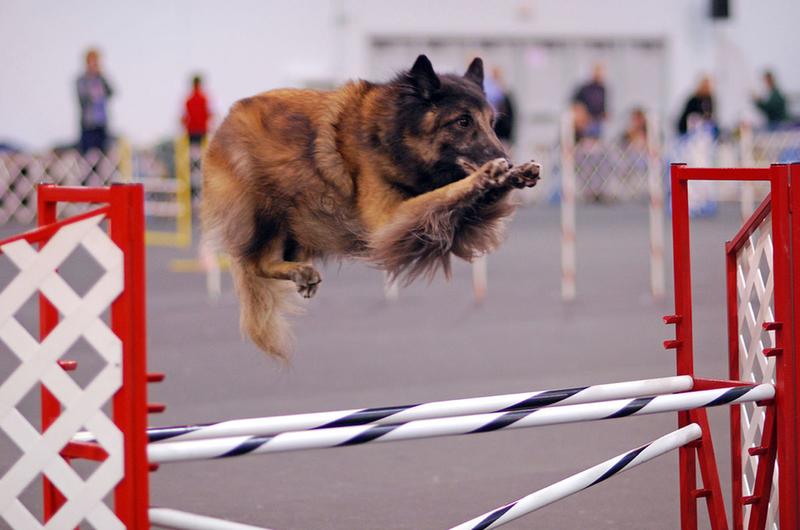
One time you've calmed a Tervuren down, though, it tin can be a loyal companion and is frequently chosen as a protective escort—not simply because of the bonds it forms with people, but because it's able to sit quietly by a person's side in cars, trains and airplanes. And, like other herding dogs, the Tervuren takes well to training for obedience and agility competitions.
Schipperke
"Schipperke" is Belgian for "little shepherd," although some people will tell you that it means "little captain," and refers to how these dogs have acted as guard dogs on barges. Either way, this tiny dog has become very popular with dog owners. Some prior feel with dogs is necessary for owning this brood, though, every bit schipperkes take a strong independent streak and sometimes ignore commands they aren't interested in following.

The "lilliputian blackness devil," as the schipperke is known as, has a great deal of energy. It loves to poke around in new environments and chase afterwards small animals. With firm guidance, all the same, it can become an first-class pet or competitive dog.
Keeshond
The Keeshond has a revolutionary pedigree; it's named after the Dutch patriot Cornelis de Gijzelaar, whose nickname was "Kees." ("Hond," as you might judge, is Dutch for "dog.") Far from being angry rebels, though, these dogs are actually rather friendly and course quick attachments with people. They make excellent therapy dogs and, unusually for smaller breeds, take even been successfully trained every bit guide dogs for the visually impaired.
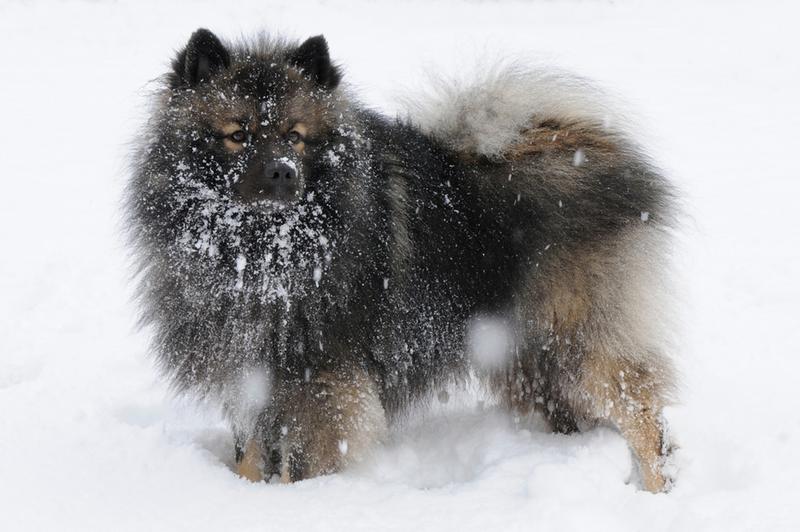
Equally a house dog, the Keeshond doesn't demand to be bathed that often, but it does crave frequent grooming. Experts suggest a weekly brushing and recommend that you never shave its fur, or you'll remove the distinctive blackness markings on its outer glaze.
German Shorthaired Pointer
The High german shorthaired pointer was bred for hunting and is as effective on rugged terrain as it is retrieving downed fowl from the water. If you aren't a hunter, it can nevertheless be a smashing dog for families, as long as it'south provided with plenty of activeness to burn down off its excess free energy. It would make an excellent running companion, for example, or could tag along while you ride a scooter or bicycle.
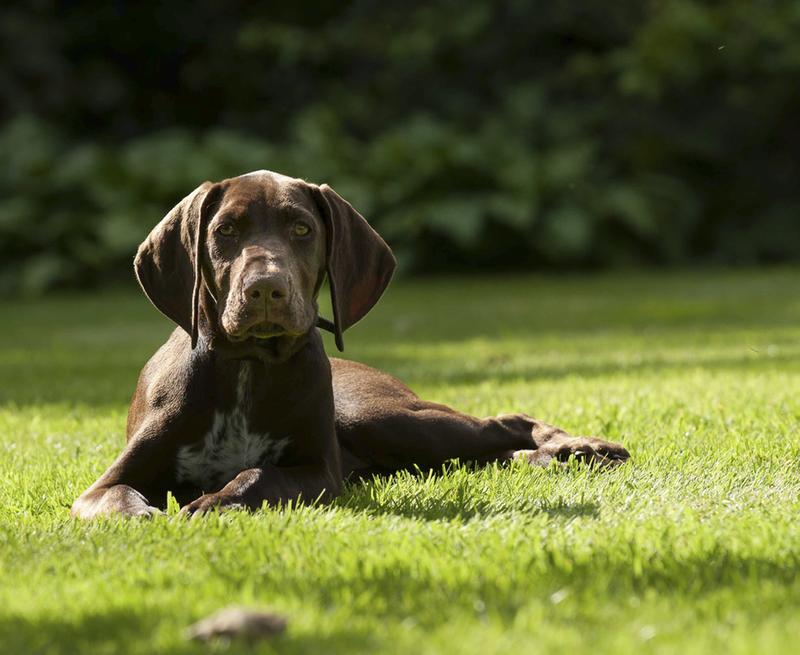
As if that's not enough, many writers have expressed their honey for German shorthaired pointers. The novelist Rick Bass even wrote a memoir entirely about his arrow, Colter, which he subtitled "The Truthful Story of the Best Canis familiaris I Ever Had."
English Cocker Spaniel
As mentioned earlier, the English cocker spaniel is very closely related to the English language springer spaniel; the two dogs were selectively bred out of the same litters in 19th-century England. While the springer was trained to flush wild game out of the brush, the slightly smaller cocker spaniel'southward special task was to retrieve quail and woodcocks for hunters afterward they'd been shot.

Cocker spaniels dearest to be effectually people and volition grade emotional bonds readily. (The fastest way to win a cocker's affection? Be the family fellow member responsible for feeding information technology.) If y'all're gentle with them and let them hang around rather than forcing them outside, they will gladly be loyal companions.
Brittany
Though it is sometimes mistaken for a spaniel, the Brittany is a distinctive breed of hunting dog, tracing its roots dorsum to the Brittany region of northwestern France. It'south withal highly popular there, but has too go a preferred brood in the United States, where information technology's known for its distinctive orange and red-brown coloring.
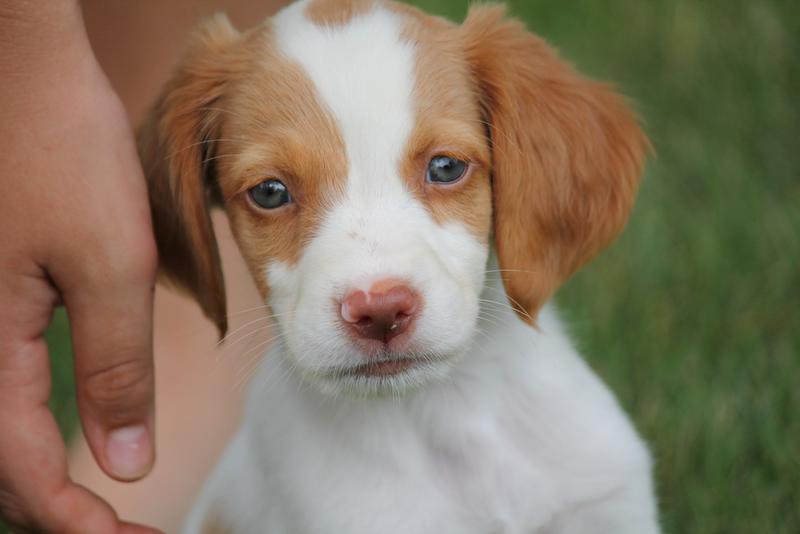
If you lot aren't a hunter, a Brittany can nonetheless brand an fantabulous pet. Properly socialized as a puppy, information technology will become a gentle, friendly dog who is e'er ready to play a new game and will learn the rules quickly. You should plan on setting aside some time every twenty-four hours to go along your Brittany happy and active.
Weimaraner
Weimaraners were originally bred in 19th-century Germany equally hunting dogs for aristocrats and are still frequently praised for their imperial advent. They tend to form intense bonds with people and tin suffer deep separation anxiety when left on their own. Their hunting instincts remain potent; if they alive in a woodsy expanse, they may go after small animals

Similar many hunting breeds, Weimaraners take a lot of energy, only they respond well to human instruction and, with proper attention, tin can cultivate an inner calmness. William Wegman became famous in the 1980s for training his Weimaraner to pose for elaborate, sometimes humorous photographs. The dogs became celebrities in the art world and would somewhen go on to star in children's books and make guest appearances on Sesame Street.
Belgian Malinois
Some people think the Malinois is a type of Belgian shepherd, like the Tervuren, but other experts recognize it as a unique breed. Information technology's a favored dog among constabulary enforcement organizations, as its keen sense of smell tin can be used to detect explosives or track missing persons. The Hugger-mugger Service fifty-fifty uses Malinois to baby-sit the White House.
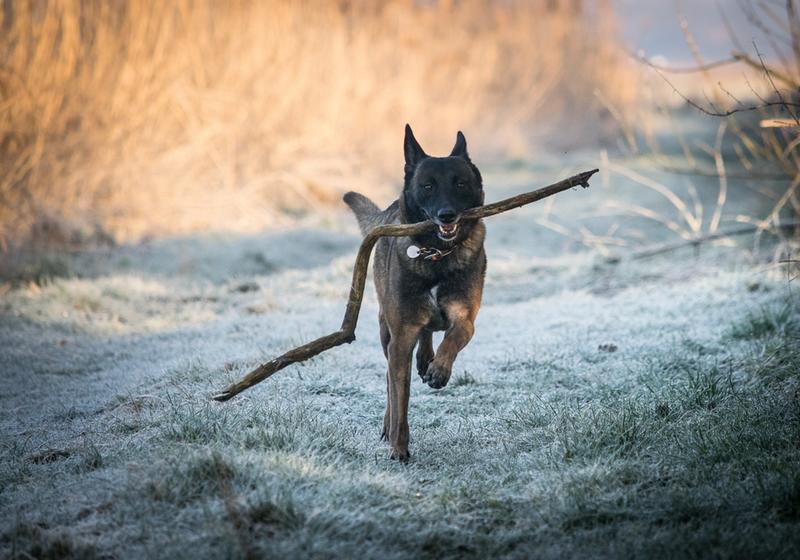
Malinois piece of work hard, just they as well work smart. Though they pick up new tasks rapidly, these dogs crave a consistent regimen of obedience training and are non a good dog for inexperienced owners who don't have the fourth dimension to piece of work with them properly.
Bernese Mount Domestic dog
The Bernese mountain canis familiaris is a big canine, originally bred to work on farms in the Alps. Its afar ancestors were used to pull carts, and carting competitions featuring these dogs remain popular to this day. "Berners" thrive in the outdoors, only a niggling exercise can go a long way for them, making these dogs enjoyable walking companions.
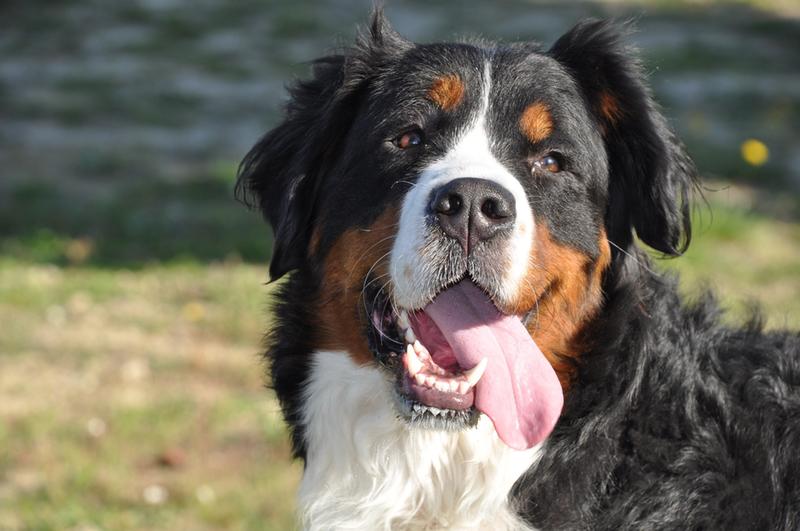
In a dwelling house, a well-trained Bernese is an even-tempered dog, who not simply gets along well with children only won't mind if they become extremely physically affectionate. (Or they could pull the kids in a wagon!) Though they are not necessarily bred as rescue dogs, in that location are many reports of Berners alerting their families to household fires and sometimes even pulling them to prophylactic.
Pomeranian
Pomeranians have been a pop toy dog brood ever since the days of Queen Victoria, but they've enjoyed a particular burst of attention in recent years. There is a negative stereotype of Pomeranians every bit spoiled brats, and it'due south true that an insecure Pomeranian tin can become enervating and ambitious.
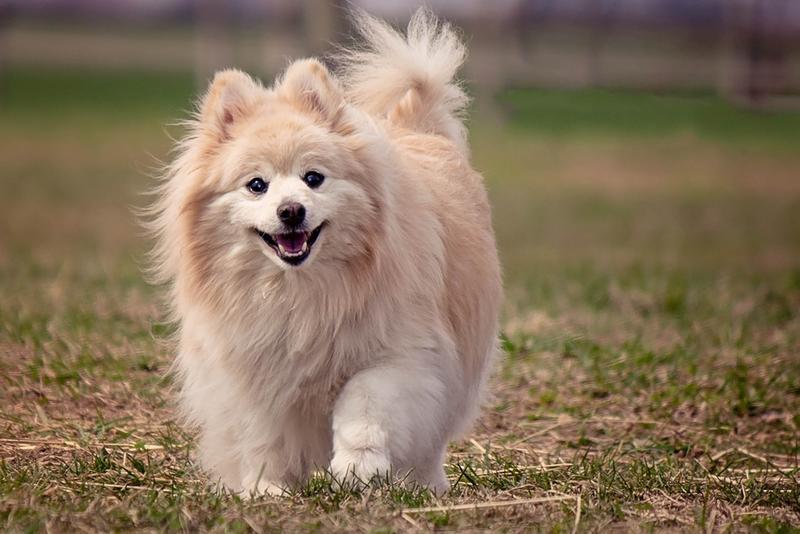
With effective grooming, even so, Pomeranians are friendly, outgoing companions. They are especially popular in cities, where their small size and insufficiently minimal exercise requirements are well suited to urban living. (They still demand to be walked regularly, of course, but tin can get by on short bursts of action, especially if they have plenty of toys at home to occupy their attention.)
Vizsla
The Vizsla is an all-terrain hunting dog from Hungary and has been a source of Hungarian national pride for centuries. These dogs were favored companions for the aristocracy, who took slap-up pains to keep these dogs' bloodlines pure, and though their numbers grew macerated at times, the Vizslas accept always been able to bounce back.
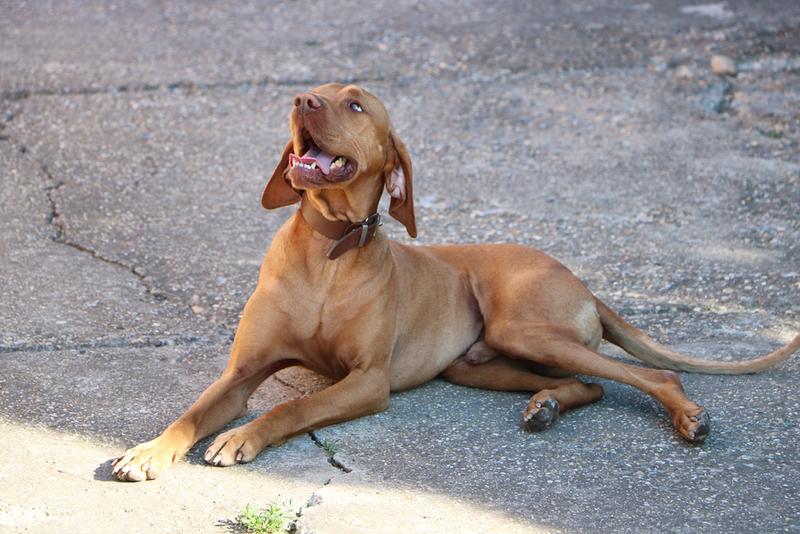
Vizslas are gentle dogs and develop close bonds with their families, often becoming visibly upset at the get-go sign of separation. They're fast learners, simply you shouldn't exist too strict with them, due to their sensitive natures. Make sure they get plenty of exercise; if you take a nearby lake or pond, with a fleck of encouragement they can go eager swimmers.
Chesapeake Bay Retriever
The Chesapeake Bay retriever can trace its origins back to a pair of St. John'due south water dogs (the same Canadian breed that spawned the mod Labrador retriever) that wound upward in Maryland in the early 19th century. They were bred with other local dogs to piece of work with hunters and fishermen and became so pop in the region that they became the official state dog in 1964.
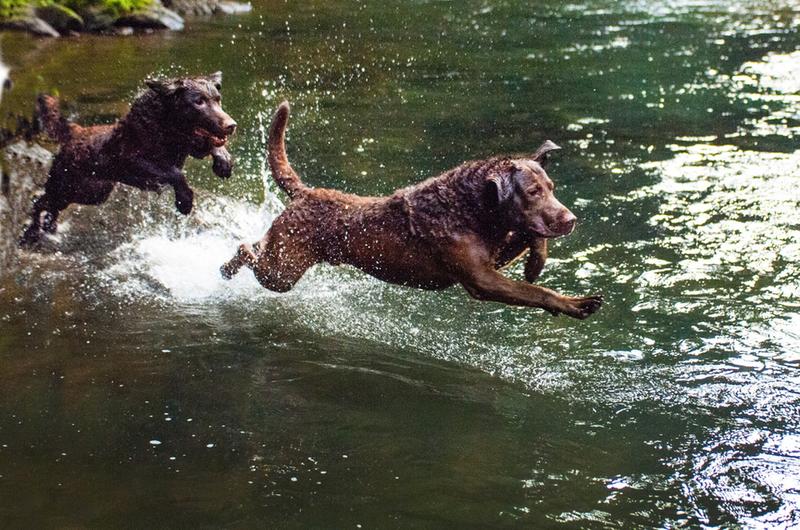
Chessies love the water, just they are also happy to run in open fields. When they're happy, y'all'll definitely know it, from their joyful barking and the open-mouthed smile that lights upwardly their face. A mixture of consistent training and relaxed activity time will make your Chesapeake Bay retriever a loyal, appreciating friend.
Yorkshire Terrier
Yorkies are famous for their small stature, rarely reaching more than seven pounds in size. Just this is no lap canis familiaris: The Yorkshire terrier is intensely curious and, if it's been properly trained, disinclined to sit down still—unless information technology's tired.

The Yorkie knows it's a good canis familiaris and can learn new commands easily, particularly in a reward-driven training plan. Give it enough of attention and information technology will stick close by y'all. A long coat is considered especially attractive in a Yorkshire terrier, simply requires an intense grooming regimen, and even Yorkies who aren't competing in dog shows demand regular, maybe fifty-fifty daily, brushing—a time commitment to keep in mind before adopting this brood.
Puli
The Puli is a distinctive breed, famous for its matted black fur, which is oft said to resemble dreadlocks. (Information technology'due south a expect that requires constant grooming to keep the curls from getting too thickly clustered.) Although the Puli is a modest canis familiaris, its origins as a herding breed make information technology a poor candidate for indoor living—it should be able to spend plenty of time outside getting do.
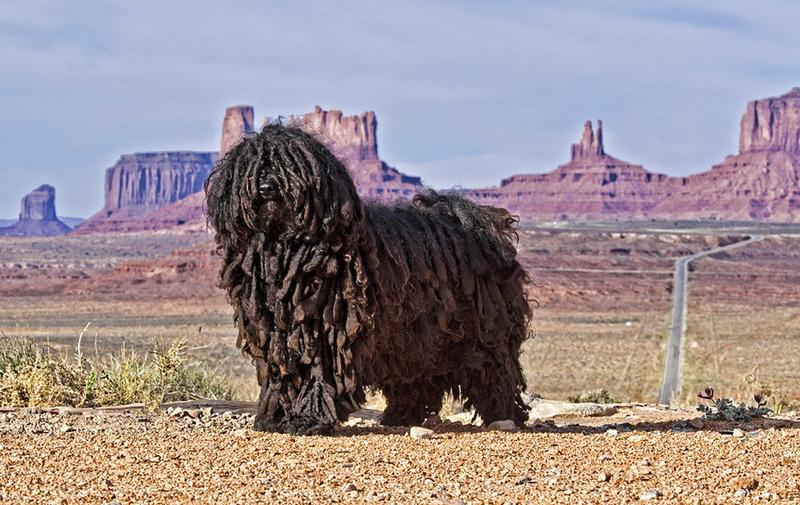
Pulik (the plural comes from the dog'southward Hungarian name) are good at taking instructions, if you start training early, and can thrive in many competitive environments. Just they also thrive as guard dogs—some other throwback to their shepherding background. A Puli volition stand its ground tenaciously confronting an intruder, loudly warning its family unit of danger, though it volition rarely go on the set on.
Border Terrier
The border terrier was originally bred for fox hunting in northern England, and its hunting instincts can still be seen in its astounding winning record in the American Kennel Gild's "Earthdog" contest, where dogs race through secret tunnels, tracking rats by their olfactory property. (Don't worry; the rats are kept prophylactic behind wooden barriers.)

Border terriers can be stubborn, simply give them a clearly defined job to do, and they probably won't waste material much time figuring out how to go it done. They're fast for dogs their size and tin can jump significant heights, making them keen performers on agility courses. Their small-scale size, forth with their independent streak, also make them great companions for people living in pocket-sized apartments in cities.
Briard
The Briard can trace its roots all the way back to 14th-century France—and it almost died out as a breed 100 years agone, when the French military put Briards on the front lines during World War I. Fortunately, enough of them survived, and the Briard continues to find frequent piece of work as a service and therapy dog to this day. Its readiness to learn new commands also makes it popular for film and telly productions, from My Three Sons and Married with Children to Emma Stone's Like shooting fish in a barrel A.
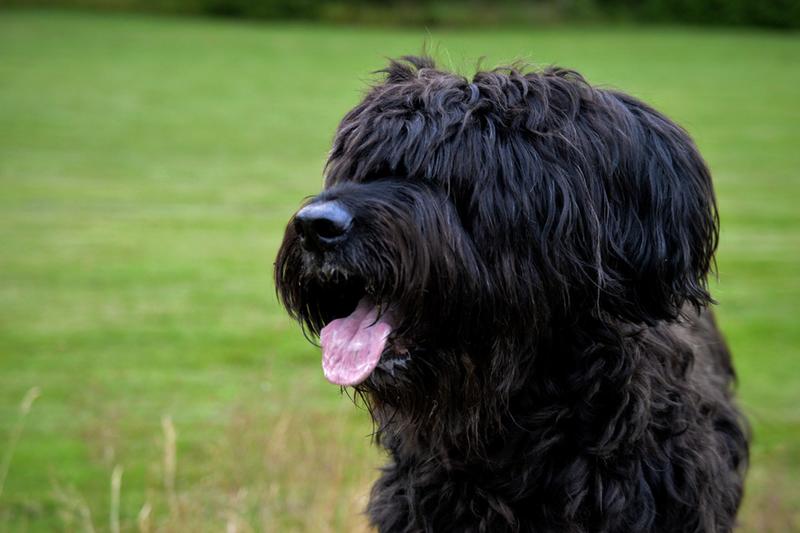
Briards form fierce emotional attachments; they'll cry miserably when you exit, then rush to greet you when you come home. Introduce children and other new people carefully, and the Briard volition gladly welcome them into the "pack," although its herding instincts may kick in if it thinks its people are wandering off.
Samoyed
The Samoyed was bred in Siberia to herd reindeer, and the Norwegian explorer Fridtjof Nansen as well used them equally sled dogs for Arctic expeditions. Their fur is well suited to the climate and is sometimes used to knit sweaters that can handle especially frigid temperatures. If you're willing to allow a dog slumber in your bed, the Samoyed is ready; dorsum in Siberia, it used to huddle with its man family to stay warm at night.
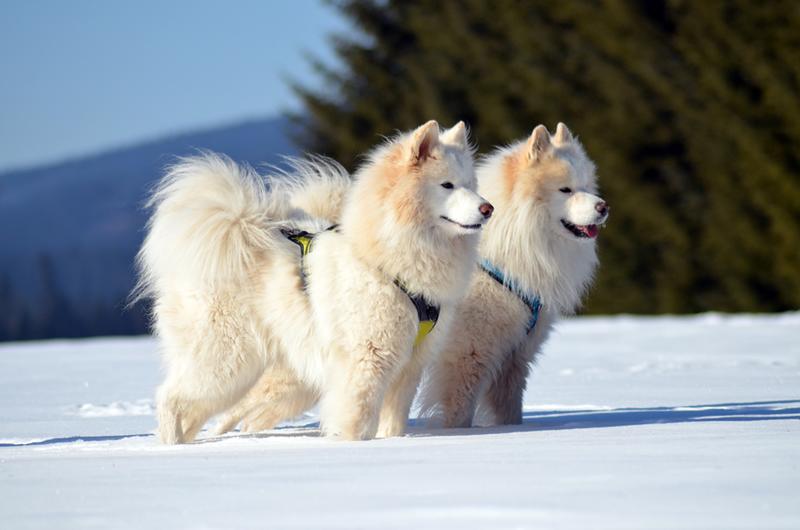
Sammies need a lot of attention, and you lot'll take to be careful to prove them who's dominate. With proper training, though, a Samoyed will become a playful companion—as friendly every bit the smile on its confront suggests—and will get forth well with small-scale children.
thorntonhisgused1988.blogspot.com
Source: https://www.reference.com/pets-animals/smart-dog-breeds?utm_content=params%3Ao%3D740005%26ad%3DdirN%26qo%3DserpIndex
0 Response to "All Beef Hot Dog Smart Points"
Post a Comment